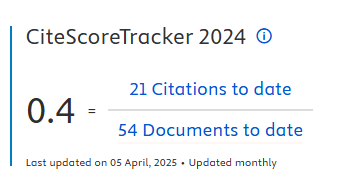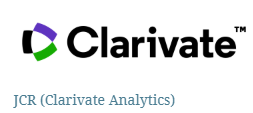Models of innovation in university-company interaction: observations in innovation agencies and business organizations
DOI:
https://doi.org/10.5585/iji.v8i3.17392Keywords:
Innovation models, University-company interaction, Technology transfer.Abstract
Objective of the study: The objective of the research was to identify which types of innovation are most recurrent in Brazilian companies and innovation agencies in interaction and technology transfer actions.
Methodology: The methodological premise was theoretical-empirical and descriptive, with analysis of the data extracted by means of questionnaires and interviews from the sample of innovation agencies affiliated to FORTEC and associated companies at ANPEI and ANPROTEC.
Originality/Relevance: In the literature, no research has been identified highlighting the most recurrent types of innovation in technology transfer processes between Brazilian companies and innovation agencies.
Main results: Incremental innovation was the most recurrent in the interaction processes of companies and innovation agencies, as well as the rates of radical and disruptive innovation obtained a satisfactory average in the interval of the Likert scale.
Theoretical/methodological contributions: This research contributed to the identification of innovation models with greater frequency in the interaction between Brazilian innovation companies and agencies, using the method for future surveys of other interactive forms of the surveyed actors.
Social/management contributions: The results identified in the research can stimulate actions to intensify the interactions and processes of technological transfer between Brazilian companies and innovation agencies.
Downloads
References
Afuah, A (1998). Innovation management: strategies, implementation and profits. New York: Oxford University Press.
Alegre, J., Lapiedra, R., & Chiva, R (2006). A measurement scale for product innovation performance. European Journal of Innovation Management, 9(4), 333–346.
Benner, M. J., & Tushman, M. L (2003). Exploitation, exploration, and process management: the productivity dilemma revisited. Academy of Management Review, 28(2), 238–256.
Bower, J. L., Christensen, C. M. (1995). Disruptive technologies: catching the wave. Harvard Business Review, jan., 43–53.
Brito, E. P. Z., Brito, L. A. L., & Morganti, F. (2009). Inovação e o desempenho empresarial: lucro ou crescimento? Revista de Administração de Empresas, 55(11).
Camisón, C., & Villar-López, A. (2010). Análisis del papel mediador de las capacidades de innovación tecnológica en la relación entre la forma organizativa flexible y el desempeño organizativo. Cuadernos de Economía y Dirección de la Empresa, 45, 115–144.
Cantwell, J. (2006). Innovation and competitiveness. In: Fagerberg, J., Mowery, D. C., & Nelson, R. R. The oxford handbook of innovation. Oxford: Oxford University Press, 543–567.
Chesbrough, H. (2003). Open innovation: the new imperative for creating and profiting from technology. Boston: Harvard Business School Press.
Chesbrough, H. (2006). Open business models: how to thrive in the new innovation landscape. Boston: Harvard Business School Press.
Chesbrough, H. (2007). Why companies should have open business models. MIT Sloan Management Review, 48(2), 22–28
Christensen, C. M. (1997) The innovator´s dilemma: when new technologies cause great firms to fail. Boston: Harvard Business School Press.
Christensen, C. M., McDonald, R., Altman, E. J., & Palmer, J. (2016). Disruptive Innovation: Intellectual History and Future Paths. Harvard Business School Working Paper.
Christensen, J. F. (2006). Whiter core competency for the large corporation in an open innovation world? In: Chesbrough, H., Vanhaverbeke, W., & West, J. (Eds.). Open innovation: researching a new paradigm (pp. 35–61). London: Oxford University Press.
Creswell, J. H. (2010). Projeto de pesquisa: métodos qualitativo, quantitativo e misto. Porto Alegre: Artmed.
Da Silva & Segatto (2017). Innovation in universities: brazilian academic research in the period of 2001-2010. International Journal of Innovation, 5(3), 1-27.
Damanpour, F., Szabat, K. A., & Evan, W. M. (1989). The Relationship Between Types of Innovation and Organizational Performance. Journal of Management Studies, 26(6), 587–601.
Dosi, G. (1982). Technological paradigms and technological trajectories. Research Policy, 11, 147–162.
Drucker, P. F. (2013). Inovação e espírito empreendedor: práticas e princípios. São Paulo: Cengage Learning.
Du, J., Leten, B., & Vanhaverbeke, W. (2014). Managing open innovation projects with science-based and market-based partners. Research Policy, 43(5), 828–840.
Fagerberg, J., Mowery, D. C., & Nelsonn, R. R. (2006). The oxford handbook of innovation. New York: Oxford University Press.
Greco, M., Grimaldi, M., & Cricelli, L. (2016). An analysis of the open innovation effect on firm performance. European Management Journal, 34, 501-516.
Gupta, P. & Trusko, B. E. (2014). Strategy for innovation. In: Gupta, P. & Trusko, B. E. (Eds.). Global Innovation Science Handbook. (pp. 3–12). New York: McGraw-Hill Education.
Hair JR., J. F., Black, W. C., Babin, B. J., & Anderson, R. E. (2005). Análise multivariada de dados. 5. ed. Porto Alegre: Bookman.
Hall, B. H., Link, A. N., & Scott, J. T. (2001). Barriers inhibiting industry from partnering with universities: evidence from the advanced technology program. The Journal of Technology Transfer, 26(1), 87–98.
Henderson, R. M., & Clark, K. B. (1990). Architectural innovation: the reconfiguration of existing product technologies and the failure of established firms. Administrative Science Quarterly, 35(1), 9–30.
Hill, C. W. L. & Rothaermel, F. T. (2003). The performance of incumbent firms in the face of radical technological innovation. Academy of Management Review, 28(2), 257–274.
Howells, J. & Tether, B. (2004). Innovation in services: issues at stake and trend. 3. ed. Brussels: Commision of the European Communities.
Ireland, R. D. & Webb, J. W. (2007). Strategic entrepreneurship: creating competitive advantage through streams of innovation. Business Horizons, 50, 49–59.
Jansen, J. J. P., Van Den Bosch, F. A. J., & Volberda, H. W. (2006). Exploratory innovation, exploitative innovation, and performance: effects of organizational antecedents and environmental moderators. Management Science, 52(11), 1661–1674.
Klomp, L. & Van Leeuwen, G. (2001). Linking innovation and firm performance : a new approach. International Journal of the Economics of Business, 8(3), 343–364.
Lahiri, N. & Narayanan, S. (2013). Vertical integration, innovation, and alliance portfolio size: implications for firm performance. Strategic Management Journal, 34, 1042–1064.
Lengnick-Hall, C. A. (1992). Innovation and competitive advantage: what we know and what we need to learn. Journal of Management, 18(2), 399–429.
Malhotra, N. K. (2011). Pesquisa de marketing: foco na decisão. São Paulo: Pearson Prentice Hall.
Markides, C. (2006). Disruptive innovation: in need of better theory. Journal of Product Innovation Management, 23, 19–25.
Mcgrath, R. G., Tsai, M. H., Venkataraman, S., & Macmillan, I. C. (1996). Innovation, competitive advantage and rent: a model and test. Management Science, 42(3), 389–403.
Mello, A. M., Lima, W. D., Vilas Boas, E., Sbragia, R., & Marx, R. (2008). Innovative capacity and competitive advantage: a case study of Brazilian firms. Revista de Administração e Inovação, 5(2), 57–72.
O´Kane, C., Mangematin, V., Geoghegan, W., & Fitzgerald, C. (2015). University technology transfer offices: the search for identity to build legitimacy. Research Policy, 44(2), 421–437.
Organização para Cooperação e Desenvolvimento Econômico. (2005). Manual de Oslo: diretrizes para coleta e interpretação de dados sobre inovação. 3. ed. Brasília: FINEP.
Pavitt, K. (2006). Innovation processes. In: Fagerberg, J., Mowery, D. C., & Nelson, R. R. (Eds.). The oxford handbook of innovation (pp. 86–114). New York: Oxford University Press.
Plonski, G. A. (1999). Cooperação universidade-empresa: um desafio gerencial complexo. Revista de Administração. Revista de Administração, 34(4), 5-12.
Porter, M. E. (1990). Vantagem competitiva: criando e sustentando um desempenho superior. 35. ed. Rio de Janeiro: Campus.
Powell, W. W., & Grodal, S. (2006). Networks of innovators. In: Fagerberg, J., Mowery, D. C., & Nelson, R. R. (Eds.). The Oxford Handbook of Innovation (pp. 56–85). New York: Oxford University Press.
Rogers, E. M. (2003). Difusion of innovations. 5. ed. New York: Free Press.
Schumpeter, J. A. (1982). Teoria do desenvolvimento econômico: uma investigação sobre lucros, capital, crédito, juro e o ciclo econômico. São Paulo: Editora Abril.
Stal, E., Nohara, J. J., & Chagas Jr. (2014). Os conceitos da inovação aberta e o desempenho de empresas brasileiras inovadoras. Revista de Administração e Inovação, 11(2), 295-320.
Tang, H. K. (1998). An integrative model of innovation in organizations. Technovation, 18(5), 297–309.
Teece, D. J. (1986). Profiting from technological innovation: implications for integration, collaboration, licensing and public policy. Research Policy, 15(6), 285–305.
Tidd, J. & Bessant, J. (2015). Gestão da inovação. 5. ed. Porto Alegre: Bookman.
Utterback, J. M. (1971). The Process of Technological Innovation within the Firm. The Academy of Management Journal, 14(1), 75–88.
West, J., Salter, A., Vanhaverbeke, W., & Chesbrough, H. (2014). Open innovation: The next decade. Research Policy, 43, 805–811.
Zien, K. A. & Buckler, S. A. (1997). From experience dreams to market: crafting a culture of innovation. Journal of Product Innovation Management, 14, 274–287.
Zilber, M. A., Lex, S., Moraes, C. A., Perez, G., Vidal, P. G., & Corrêa, G. B. F. (2008). A inovação e os fatores organizacionais característicos. Revista de Ciências da Administração, 10(21), 76–96.
Downloads
Published
How to Cite
Issue
Section
License
Copyright (c) 2020 International Journal of Innovation

This work is licensed under a Creative Commons Attribution-NonCommercial-ShareAlike 4.0 International License.
- Abstract 597
- PDF 584













